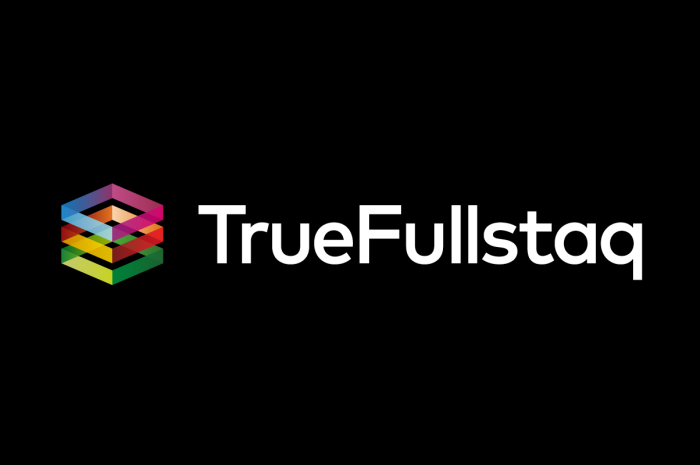As Microsoft no longer supports AX 2012, switching to Dynamics 365 Unified Operations (UO) with Finance and Supply Chain Management modules (previously known as Dynamics 365 F&O) is the best solution. However, making the switch is no simple feat. Recently, we hosted two webinars in which we focused on this topic. Did you miss these webinars? Not to worry: you can view the webinars (click watch part 1 and part 2 – in Dutch) or read up on the topic via this blog. In this blog, I will inform you of what you should take into account when migrating (on-premises) AX 2012 to Dynamics 365 in the Cloud.
Microsoft continues to develop
Much has changed since Microsoft purchased Axapta in 2002. It started with the first substantive product developments, which consistently resulted in new versions of AX. AX 2012 represents the final Microsoft AX version that can be run entirely on-site. As of AX 7, each new version was developed entirely to be used from the Cloud and each new release introduced practical, new functions. The latest version is Dynamics Unified Operations and the newest release integrates the modules Finance and Supply Chain Management almost seamlessly with other Dynamics 365 applications and Power BI.
Reasons to switch now
There are a number of reasons to switch from AX 2012 to the Microsoft Dynamics 365 platform. The most important reasons are:
End of AX 2012 support
After nine years, Microsoft is ending support for AX 2012. The mainstream support for R2 and R3 has stopped, but the extended support will be significantly reduced in the coming period. This means that there will be no more product upgrades and only security updates and bug fixes will be released. However, that extended support will also ultimately end: in April 2022 for R2 and in October 2023 for R3.
Increased convenience for users
Microsoft’s ERP solution is becoming more powerful because of the far-reaching integration with other Dynamic 365 applications. Additionally, you can now load journal posts with a single click, instead of needing to use a special add-in. The addition of Power BI and Power Apps make Dynamics 365 Unified Operations a powerful application.
As Microsoft Dynamics 365 is a Cloud solution, employees can collaborate on any device they desire regardless of location. No additional software, such as a VPN, is required as authorization takes place via your organization’s Azure Active Directory.
Always up to date
For Dynamics 365, Microsoft sticks to the one version model and follows an update schedule similar to that of Windows. Eight updates (six small ones and two larger ones) are released each year. As a Dynamics 365 user, you are obliged to implement an update at least two times a year. This means that your organization always implements the new functions and can be certain that its security is in order.
Testing made simpler
For each update, it is very important to thoroughly test the new version. Compared with regression tests in AX 2012 which took a lot of time and energy, the new RSAT tool in Dynamics 365 Finance and Supply Chain Management makes it easier and almost fully automated to go through the testing process before you start using the new version after an update. We recently hosted a webinar on this topic as well.
Security and compliance
In this day and age, companies who fall victim to cyber criminals or data leaks regularly feature in the news. Microsoft does whatever it can to prevent such situations. Examples of this include multifactor authentication as a supplement to the authorizations defined in the Azure Active Directory. Additionally, Microsoft makes every effort with regards to compliance: it meets all requirements set in the GDPR regarding the storage of data.
Base-Attach model for licenses
It becomes much easier to maintain an overview of Microsoft’s licensing landscape when your organization switches to Dynamics 365. This is because each user is assigned a ‘basic’ license – and if a user needs access to multiple modules, this can be granted via an Attach license. This ensures both more flexibility in the Cloud and greater cost control, as each license is on the basis of pay-per-use. In other words, you only pay for what you need.
Transition discount
The final reason to now start on migrating from AX to Dynamics 365 relates to the costs: if you use an active enhancement plan for the on-premises license, you will receive a 40% discount for the Cloud until the summer of 2023. After activation, this discount is valid for three years in combination with a support contract.
The four phases of a migration process
If you want to switch from on-premises AX to Dynamics 365 Unified Operations, then this represents quite the challenge. In all honesty, it is also a process that many organizations very much dread. That’s why it’s good to know how such a process plays out and what you can expect. We would therefore be glad to share our working method with you.
- During the first phase, we perform a Quick-Scan. For this, we map the options in relation to migration.
- On the basis of the outcomes of the Quick-Scan, we will draw up advice and a project plan. Additionally, we also give an estimation of the time to complete the entire project. During this phase, the Diagnosis is carried out.
- The third phase is the Analysis phase, during which we conduct a thorough analysis of the application landscape of the organization. Among other things, we will conduct a Fit/Gap analysis so that we know exactly where potential bottlenecks to the migration might arise.
- Lastly, we arrive at the Implementation phase in which the actual migration takes place. The new environment is tested extensively and as soon as everything is in working order, we will deliver the new production environment.
What do the technical background aspects of a migration look like?
Each migration is unique, just like each organization is unique. Nonetheless, there are a number of technical aspects that require attention for each migration process from AX to the Cloud. For example, an LCS Project must be created and the correct goals for the project must be selected. Lifecycle Services (LCS) is the platform that is used to maintain your environments in the Cloud.
Another thing to focus on is the Upgrade Analyzer, which is a tool that offers advice on the elements to be optimized before you start the migration. Examples include advice on data clean up, configuration checks, and tracking down functions that your organization uses but which no longer exist in Microsoft Dynamics 365 F&O.
Your use of Microsoft’s Upgrade Tool is also important to the success of the migration. This tool provides an overview based on your application landscape in AX 2012 (the model store) including all custom applications and third-party software. This overview in Excel shows what has been done and what actions you still need to take for a successful migration. It often takes a developer to interpret this report and translate it into a practical action plan.
The last important technical aspect is the data upgrade. The tools needed for this can be downloaded via LCS.
What are the functional steps in a migration?
When talking about the functional aspects of migrating from AX 2012 to Dynamics 365 in the Cloud, the first thing to do is to properly map the application landscape. As part of this, consider all applications that directly or indirectly interact with the ERP system to make any dependencies clear.
For each migration, write a thorough project plan in which you specify the scope of the project, the lead time, and the stakeholders. Make sure the team handling the migration has enough experienced users, as they often provide vital insights.
Performing a Fit/Gap analysis is also an important functional aspect, because you definitely want to avoid discovering – after the migration – that your processes do not match the new system. When you find that processes need to be modified, it is best to register them in new functional designs.
The last crucially important functional aspect is user training. Even if the processes within Dynamics 365 are not substantially different from the processes your employees had become accustomed to in AX 2012, the user interface is now substantially different. That’s why all employees – even the most experienced users among them – should familiarize themselves with the new application and all the new functionalities that are now available to your organization!
The second webinar featured guest speaker Martin Abrle, a Cloud Architect at Microsoft. He shared his experiences on software migrations. If you watch the webinar footage, you can hear his experiences (click here to watch the webinar – in Dutch).
How can Broad Horizon Solutions help with a migration?
Since every migration from AX on-premises to Dynamics 365 Finance and Supply Chain Management goes through the same phases, Broad Horizon Solutions has developed solutions for each one. Of course, at each stage we review the specific impact for your organization. This allows us to help organizations move forward at every stage. In doing so, we look at the following:
- Quick-Scan– This includes the findings from the upgrade tool and a ‘high over’ Fit/Gap analysis.
- Diagnosis– On the basis of the Quick-Scan, we will draw up advice and a project plan.
- Analysis– During a comprehensive analysis, we map the entire application landscape, including any customizations, and make a more comprehensive Fit/Gap analysis, so you won’t have any surprises during the migration.
- Migration & Aftercare– During the migration phase, we incorporate all findings from the Upgrade Analyzer and the Upgrade Tool, rewrite code where necessary, and develop new Functional Designs. Of course, we also ensure that the data is migrated and your configuration is extensively tested before it goes live in your production environment. Lastly, we train your employees so they can start using Dynamics 365 Unified Operations, Finance and Supply Chain Management confidently and as efficiently as possible.
Are you ready for the migration?
If your organization is still using AX 2012 and now wants to make the move to the Cloud, please contact us to discuss your personal situation. As an Account Manager, I regularly speak to companies about this topic and for years have been helping companies transition from AX 2012 to Dynamics 365 Finance and Supply Chain Management. Furthermore, we have all the knowledge you need to make this migration a success. We’d love to help you to the next step in the Cloud!


